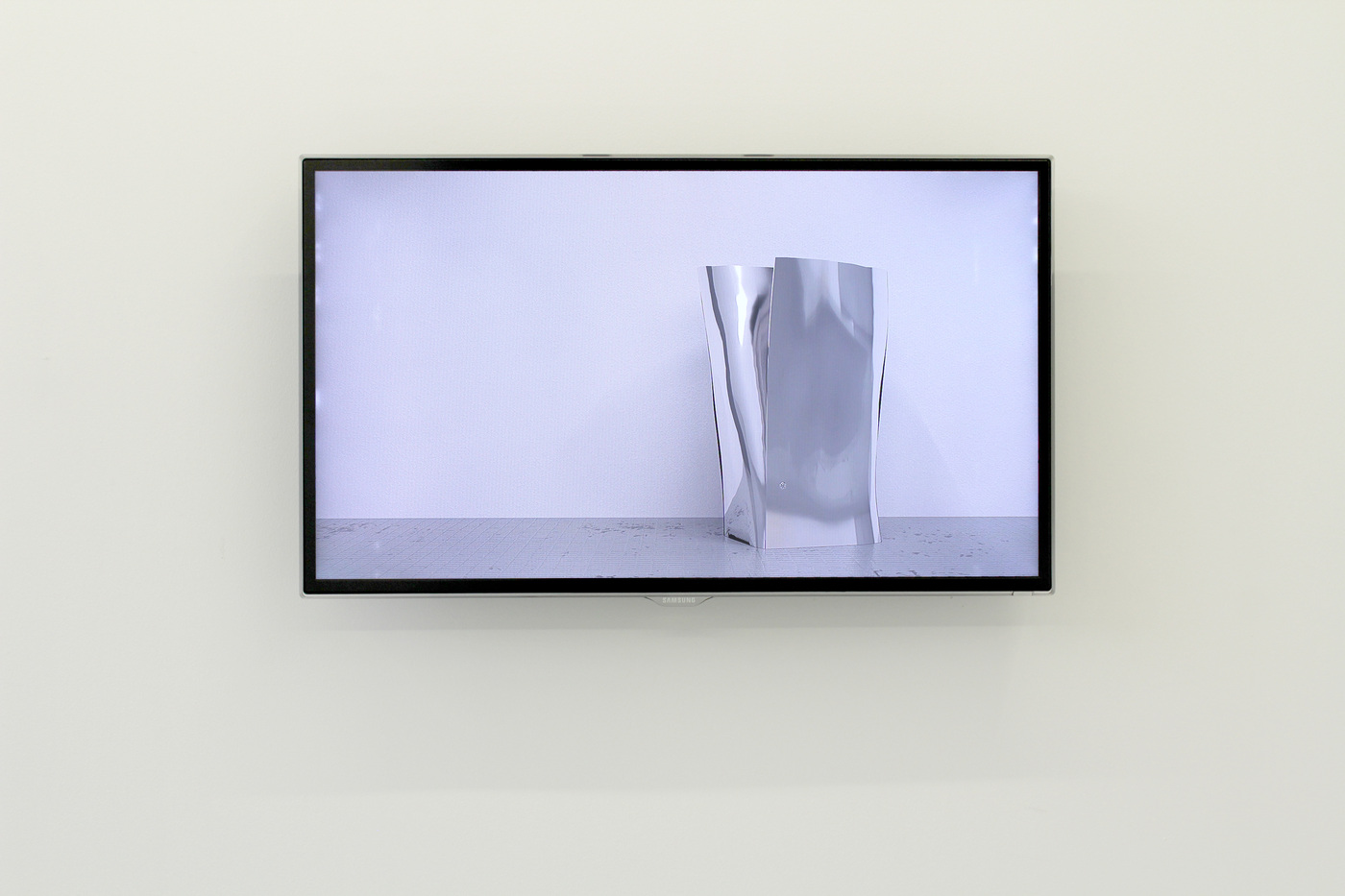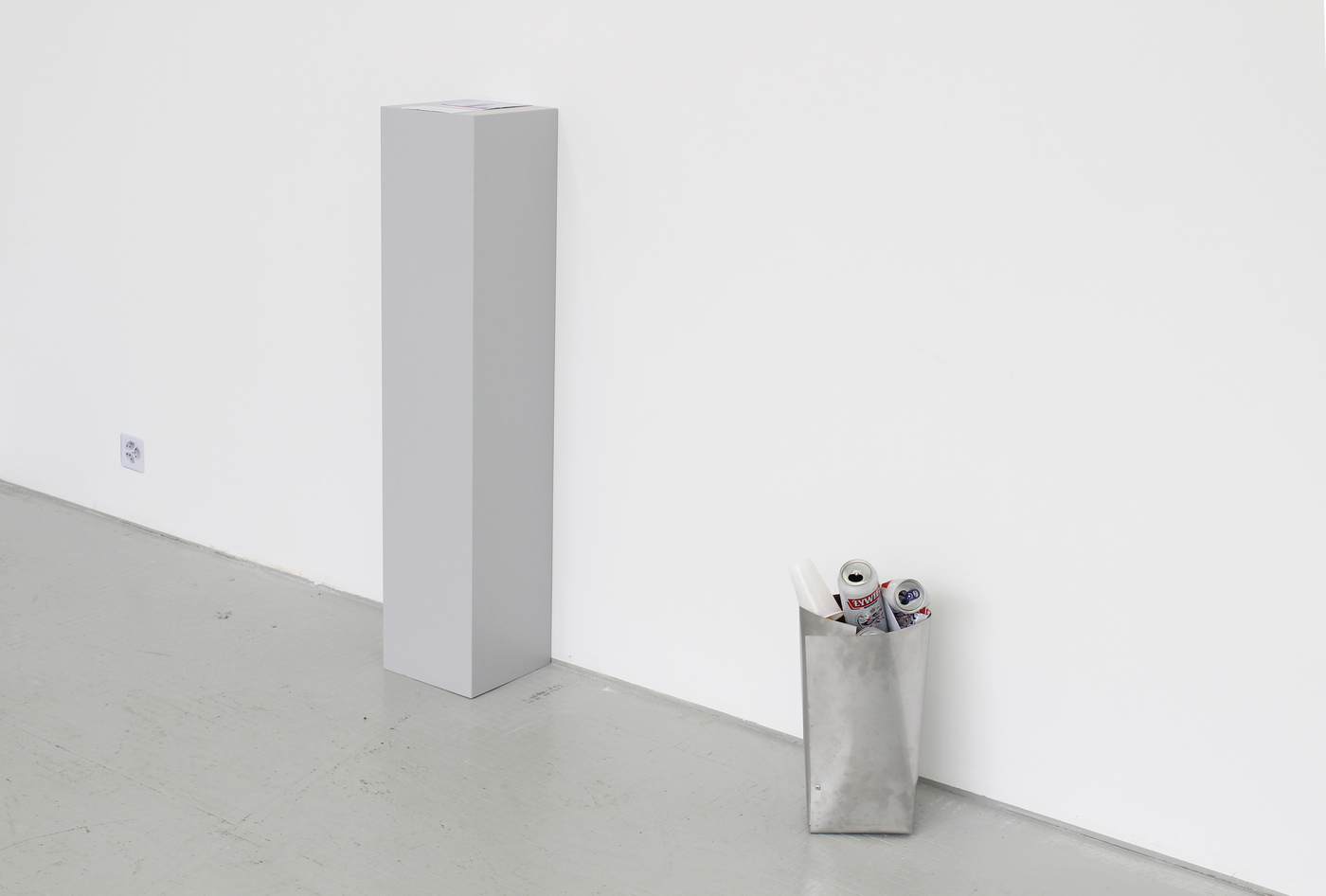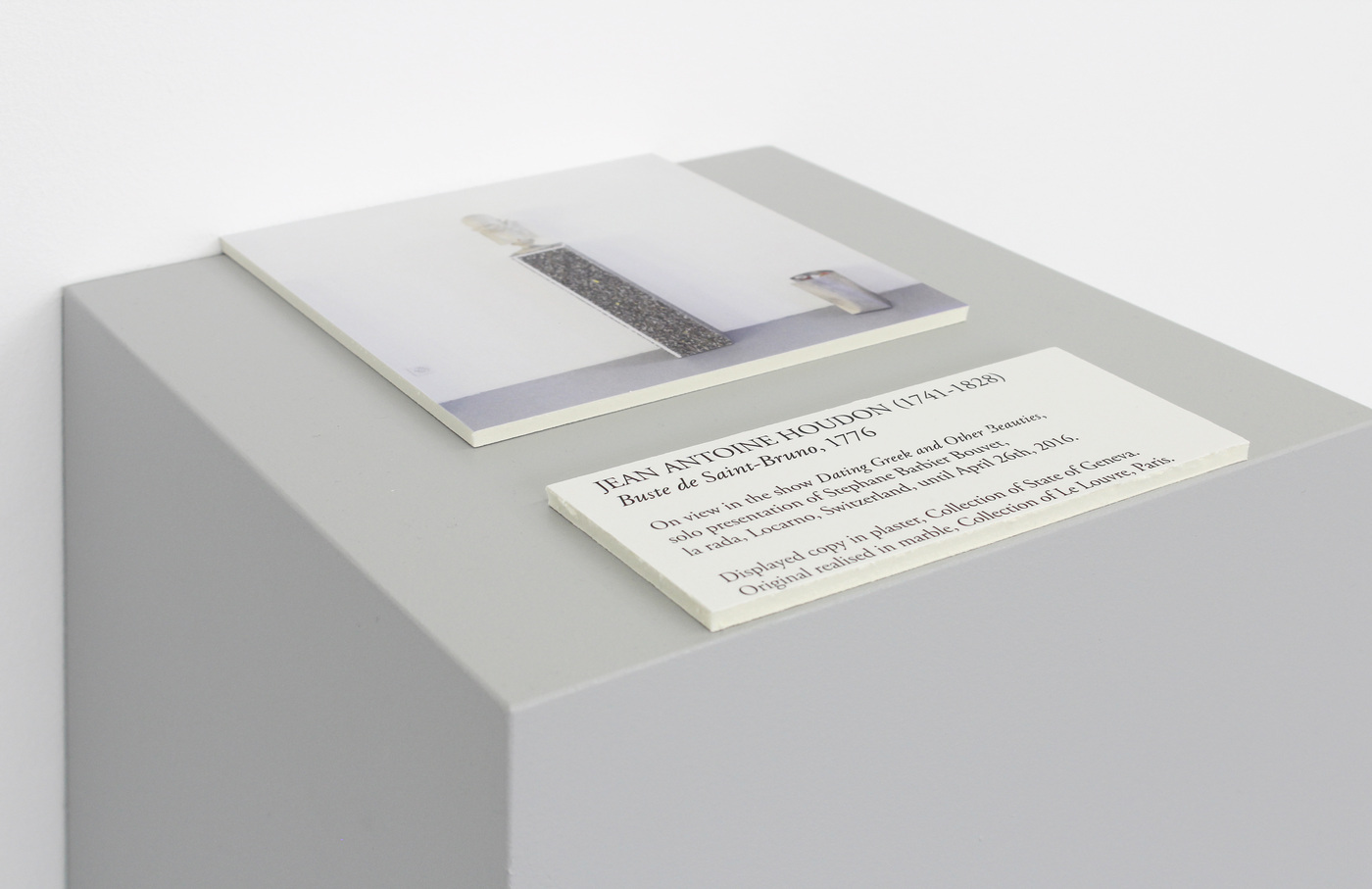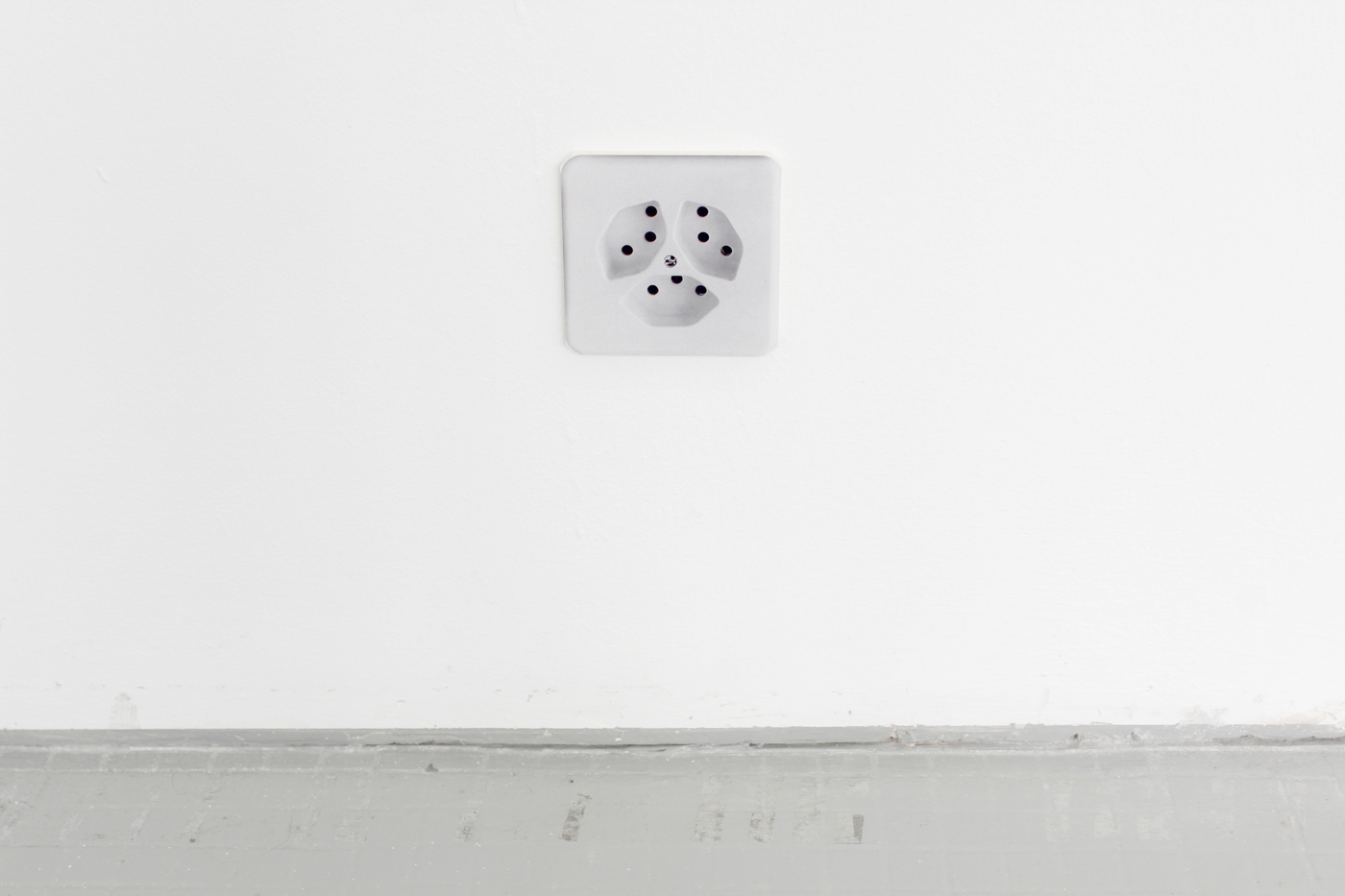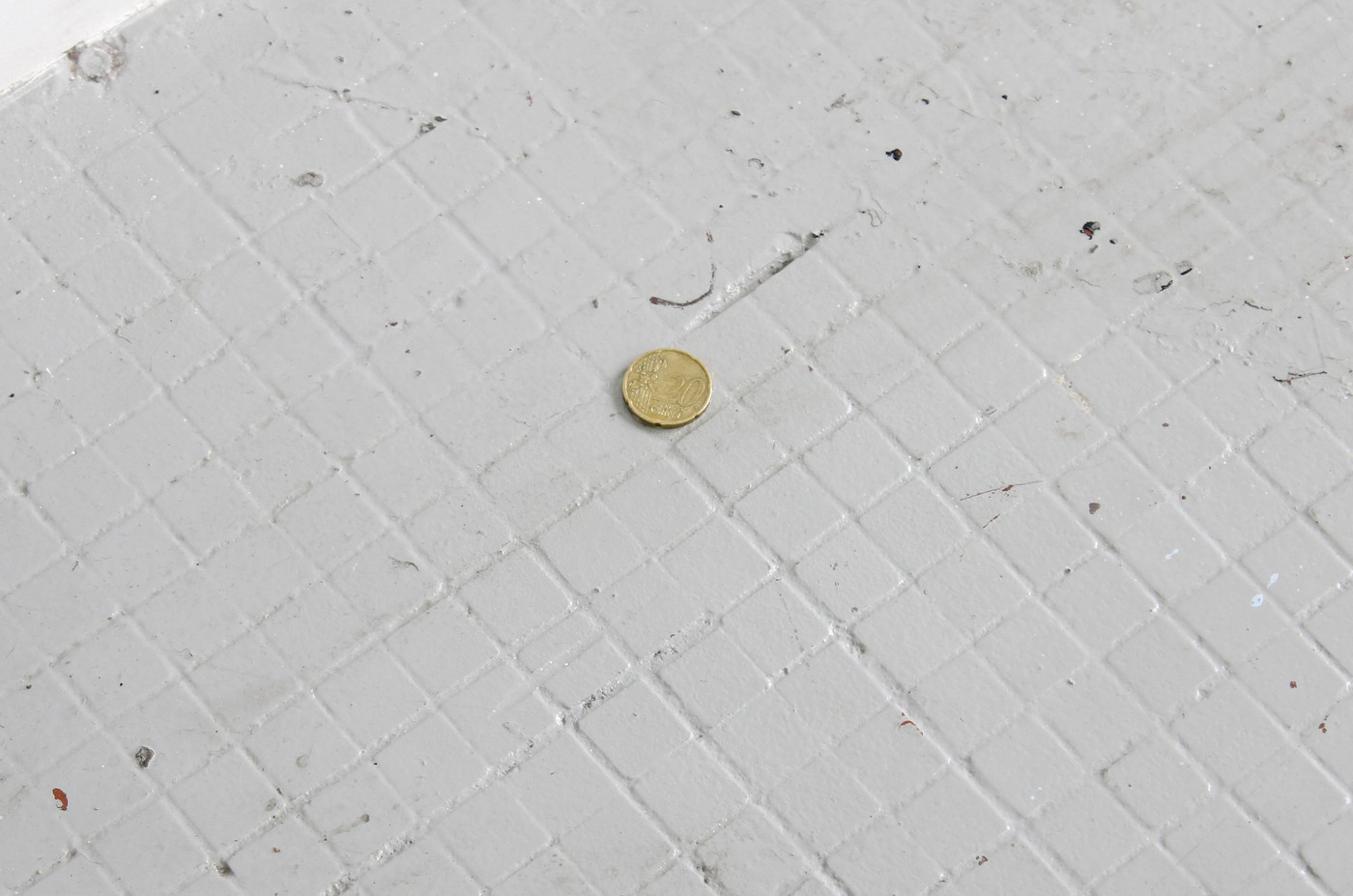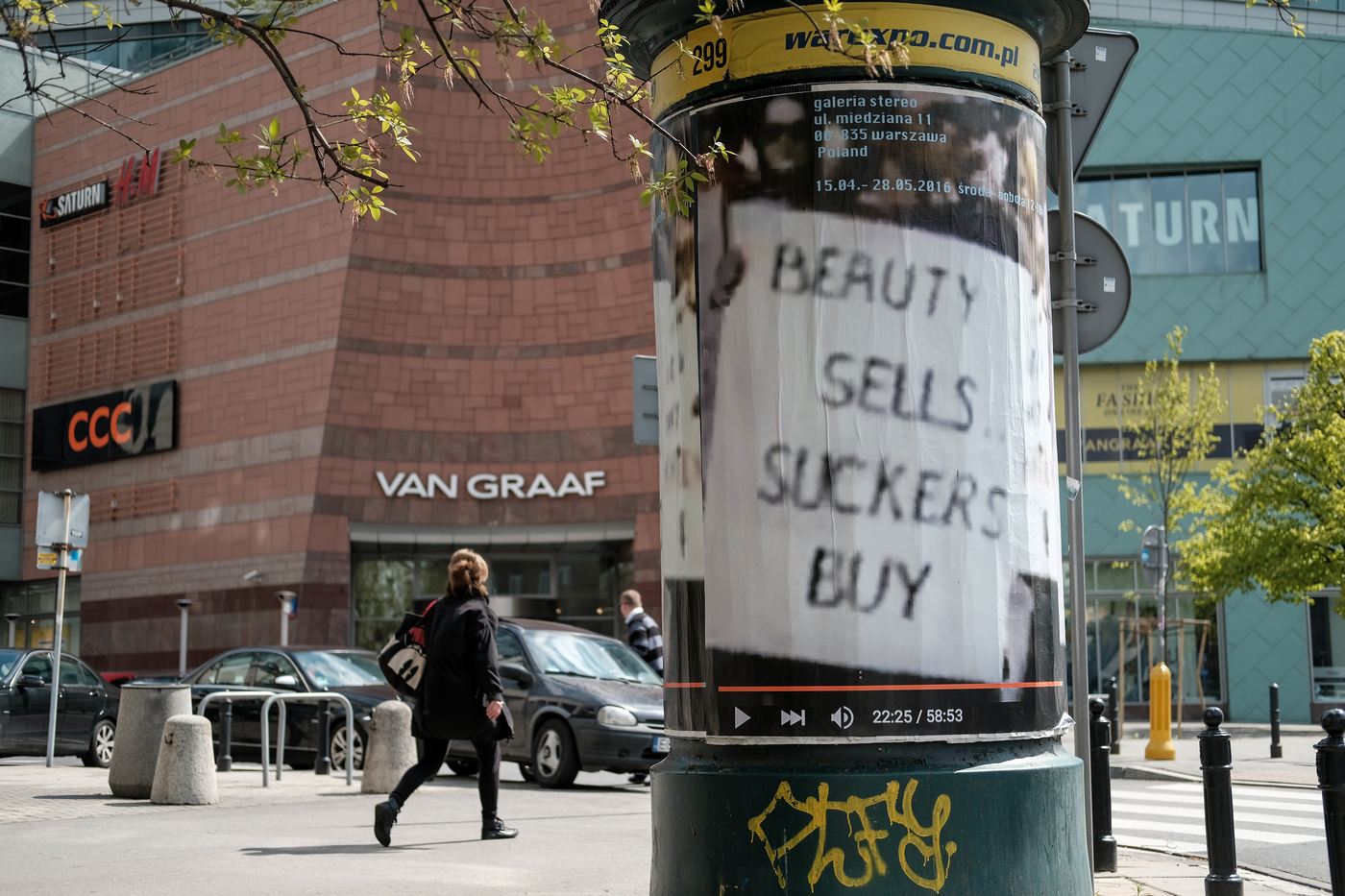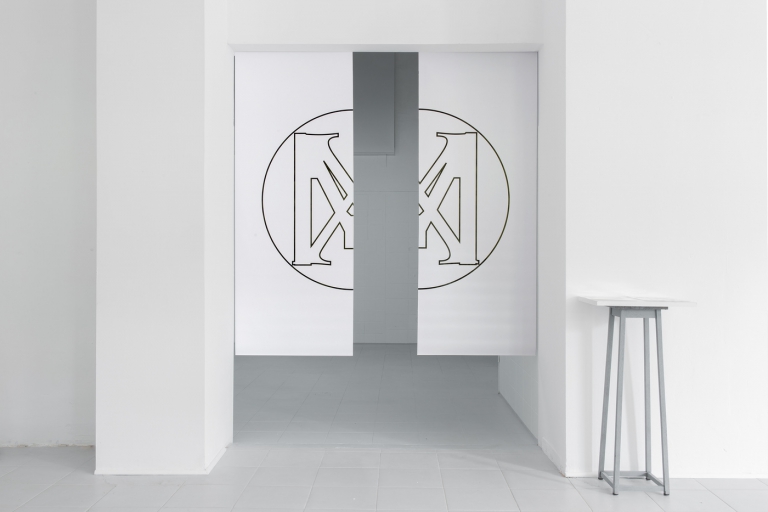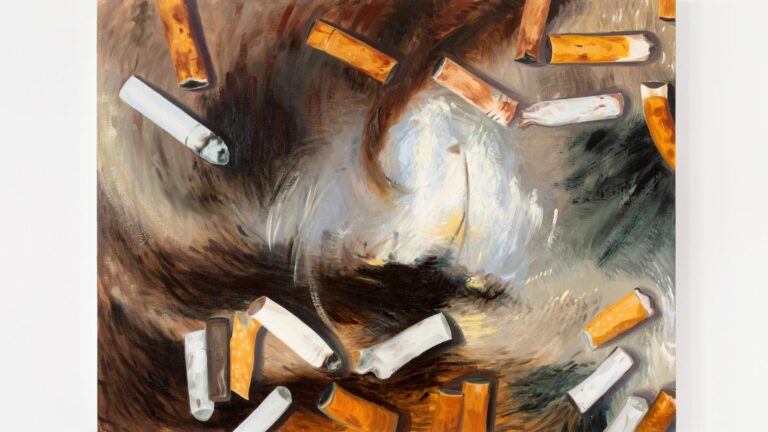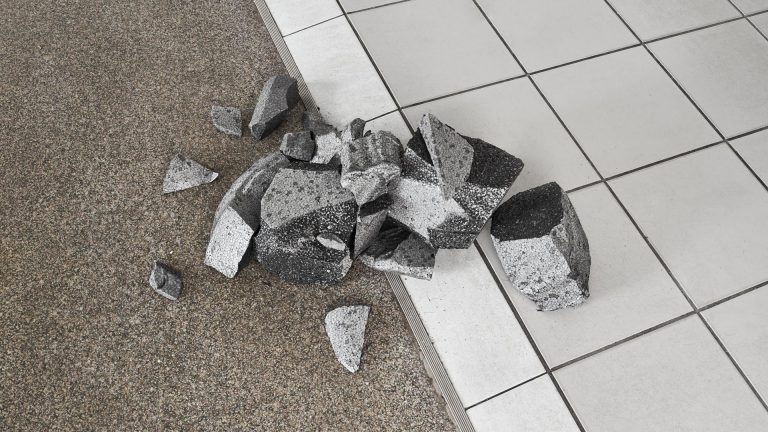Artists: Steve Bishop, Stéphane Barbier Bouvet, Emmanuelle Lainé, Bea Schlingelhoff
Exhibition title: Irony Comes from a Vanishing Point
Curated by: Julia Marchand
Venue: Galeria Stereo, Warsaw, Poland
Date: April 15 – June 4, 2016
Photography: all images copyright and courtesy of the artist and Galeria Stereo, Warsaw
Where does it lead us to question the legacy of nascent forms of Institutional Critique in the wake of the birth of augmented reality ? If early works of Institutional Critique were reflecting upon the physical conditions of the space to unveil the reality behind the neutral display of the white cube, augmented reality implies a live view of reality modified by a computer to enhance and disturb one’s perception of it.
Although the artists present within the gallery haven’t created live simulations, they each deliberately embrace a simulated reality as an extension of the exhibition space. French artist Emmanuelle Laine’s work acts as the central work in the exhibition. In her first ever 3D video, Lainé captures a partial view of the group exhibition, framing its representation with a post-baroque ethos. By modelising the artworks displayed in the space, her animation operates as a proto-documentation of the show whilst forecasting its incomplete representation and documentation. What are the technologies and software at hand one can use to simulate, in virtual terms, an artwork which measures atmospheric humidity and temperature and that distributes olfactive matter into the air?
Responsive to its most direct physical environment and building upon the logic of Postminimalism, the sculpture “Read/Write” (2012) by Steve Bishop pushes the gesture of playing with the senses. It relies on the presence of the bodies of visitors as well as the efficiency of the heating system within the exhibition space as the thermo-hygrograph register the gallery temperature history. Stéphane Barbiet Bouvet’s installation stems from his recent research into discarded Greek and Modern plaster casts as well as his humoristic take on the expectations of visitors regarding conventional museographic displays and history. His work, from which the title of the show is derived, finds its spoken counterpart in a conversation with a spirit reader speaking on behalf of Michael Asher, played out in the exhibition. Through a process of displacement, the most culturally specific work – a cast representing the head of Saint Bruno by Houdon – is absent from the exhibition but manifests itself in a simulated reality suggesting some form of cultural scarcity. Conceived to be exhibited in a shopping area in Warsaw*, the poster announcing this exhibition by Bea Schlingelhoff reads “Beauty Sells, Suckers Buy”, an image screenshot taken from the BBC4 documentary Lefties:Angry Wimmin from 2007. Her work is in response to the radical methodology of many artists who do not put artworks on sale.
As much as site-specific works remain bound to their contexts – impossible to move without being destroyed – the exhibition Irony Comes from a Vanishing Point itself becomes relocatable and rematerialised through a process of transformation and remodelisation.
* The poster has been on view at the intersection of Aleja Jana Pawla II and Złota Street.
Emmanuelle Lainé, I’ve seen things that you people wouldn’t believe, 2016
Emmanuelle Lainé, I’ve seen things that you people wouldn’t believe, 2016
Emmanuelle Lainé, I’ve seen things that you people wouldn’t believe, 2016
Emmanuelle Lainé, I’ve seen things that you people wouldn’t believe, 2016
Stéphane Barbier Bouvet, Long distance relationship, 2016
Stéphane Barbier Bouvet, Long distance relationship, 2016 (detail)
Stéphane Barbier Bouvet, Long distance relationship, 2016 (detail)
Steve Bishop, Read / Write, 2012
Steve Bishop, Read / Write, 2012 (detail)
Stéphane Barbier Bouvet, Screwed Around, 2016
Bea Schlingelhoff, Beauty Sells, Suckers Buy




